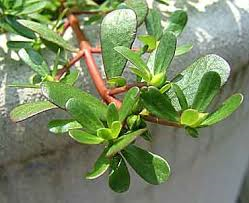
A list of useful weeds comes quickly to mind. Think of dandelions, whose first tender spring greens are delicious in salads or steamed. Later, the cheerful dandelion flowers can be steeped, sweetened and fermented into a mellow wine. That tasty wine is one good reason to harvest the blossoms before they turn into the fluffy puffs that children blow to make wishes come true.
In some gardens, artichoke thistles, cardoon stalks and spring greens such as chickweed and miner's lettuce are considered invasive, but they are welcome volunteers in my garden. The lacy yellow fennel blossoms that adorn Napa Valley roadways and meadows provide pollen to rub on chicken or fish if you are patient enough to collect it. Wild fennel seeds can be chewed, used to flavor biscotti, or crushed and toasted to add to olives and olive oil.
All these plants are weeds when they grow where we don't want them, yet all are considered a culinary treat by people in other parts of the world.
One weed that is prolific in many gardens is common purslane (Portulacaoleracea). It's easy to uproot, and yanking them up is preferable to hoeing or tilling since each little jade finger that breaks off can generate a sprawling new succulent.
Purslane is native to India and Persia and has fleshy stems and small yellow flowers. It was said to be one of Gandhi's favorite foods. The stems lie flat on the ground as they radiate from a single taproot, sometimes forming large mats of leaves. Purslane resembles a small-leaved jade plant. It is closely related to rose moss (Portulaca grandiflora), although grandiflora is a native of South Africa and treasured more for its flowers than its culinary attributes.
According to a University of Illinois web site, viable purslane seed has been found after 40 years. As the site says, you may find that depressing, or exciting.
If you want to eradicate purslane in your garden, do not let it go to seed. Flowers and seeds develop just three weeks after seedlings appear, so be vigilant. And even if you uproot the purslane, your work is not done. Be sure to discard the plants, because pieces simply lying on garden soil can root and take off again. For more information about purslane, go to http://www.turf.uiuc.edu/weed_web/index.htm.
You can sometimes find purslane at farmers markets, or you may find it in your box if you receive a produce delivery from a local farm. It contains a potent package of nutrients. Whether enjoyed raw in salads or cooked in soups and stews, purslane is rich in minerals, including calcium, magnesium, potassium and iron. It is also high in antioxidants, with more heart-healthy omega-3 fatty acids than any other plant.
For adventurous eaters willing to welcome a basket of weeds into the kitchen, purslane provides a lot of inspiration. The web site Epicurious (www.epicurious.com) has 23 recipes for purslane, including a purslane and parsley salad with cherry tomatoes, lemon and olive oil. A slightly more complicated recipe from the site is purslane and avocado tacos with salsa. (Mexicans know purslane as verdolagas.) Or how about a purslane, Meyer lemon and pear salad with kaffir lime vinaigrette?
Cooking purslane mellows its slightly lemony tang and wilts it like spinach so you will need a lot or it for cooked dishes. That tang and sturdy texture are wonderful in salads, pickles and fresh and cooked salsas.
Still not sure what to do with purslane? The most extensive list of ideas I have found is “45 Things to Do with Purslane” (http://chocolateandzucchini.com/ingredients-fine-foods/45-things-to-do-with-purslane). If you decide you want to grow purslane, you can find seeds at http://www.territorialseed.com/category/s?keyword=purslane. But first put on your shoes and go see if you are lucky enough to already have some growing in your garden. Then you won't have to buy it.
Workshop: Napa County Master Gardeners will conduct a workshop on “Cool Season Veggies” on Sunday, August 17, from 2 p.m. to 4 p.m., at the Yountville Community Center, 6516 Washington Street, Yountville.To register for the Yountville workshop call the Parks & Recreation Department at 707-944-8712 or visit their web site.The workshop repeats onSaturday, August 23, at U.C. Cooperative Extension, 1710 Soscol, Napa. Grow your own vegetables even when days are short and nights are cold. Learn which vegetables thrive in cooler temperatures, how to protect them from heat when they are getting started, and how to time planting to ensure months of harvest. To register for the Napa workshop: Online registration (credit card only) Mail in registration (cash or check only).
Master Gardeners are volunteers who help the University of California reach the gardening public with home gardening information. Napa County Master Gardeners ( http://ucanr.org/ucmgnapa/) are available to answer gardening questions in person or by phone, Monday, Wednesday and Friday, 9 a.m. to Noon, at the U. C. Cooperative Extension office, 1710 Soscol Avenue, Suite 4, Napa, 707-253-4143, or from outside City of Napa toll-free at 877-279-3065. Or e-mail your garden questions by following the guidelines on our web site. Click on Napa, then on Have Garden Questions? Find us on Facebook under UC Master Gardeners of Napa County.
Napa County Master Gardeners welcome the public to visit their demonstration garden at Connolly Ranch on Thursdays, from 10:00 a.m. until noon, except the last Thursday of the month. Connolly Ranch is at 3141 Browns Valley Road at Thompson Avenue in Napa. Enter on Thompson Avenue.